
It doesn’t matter if you’re a rookie or a Hall of Famer, you’ll have a legendary time making family memories in our outdoor sports wonderland. With “my-sized” equipment, knowledgeable and encouraging Coaches, and fun, inclusive atmosphere, the Riley Children’s Health Sports Legends Experience®is fun for all ages! Because when the play is better, the day is better.
Play with your home team and discover your strengths in a new sport, or learn about a sport you love in a whole new way.
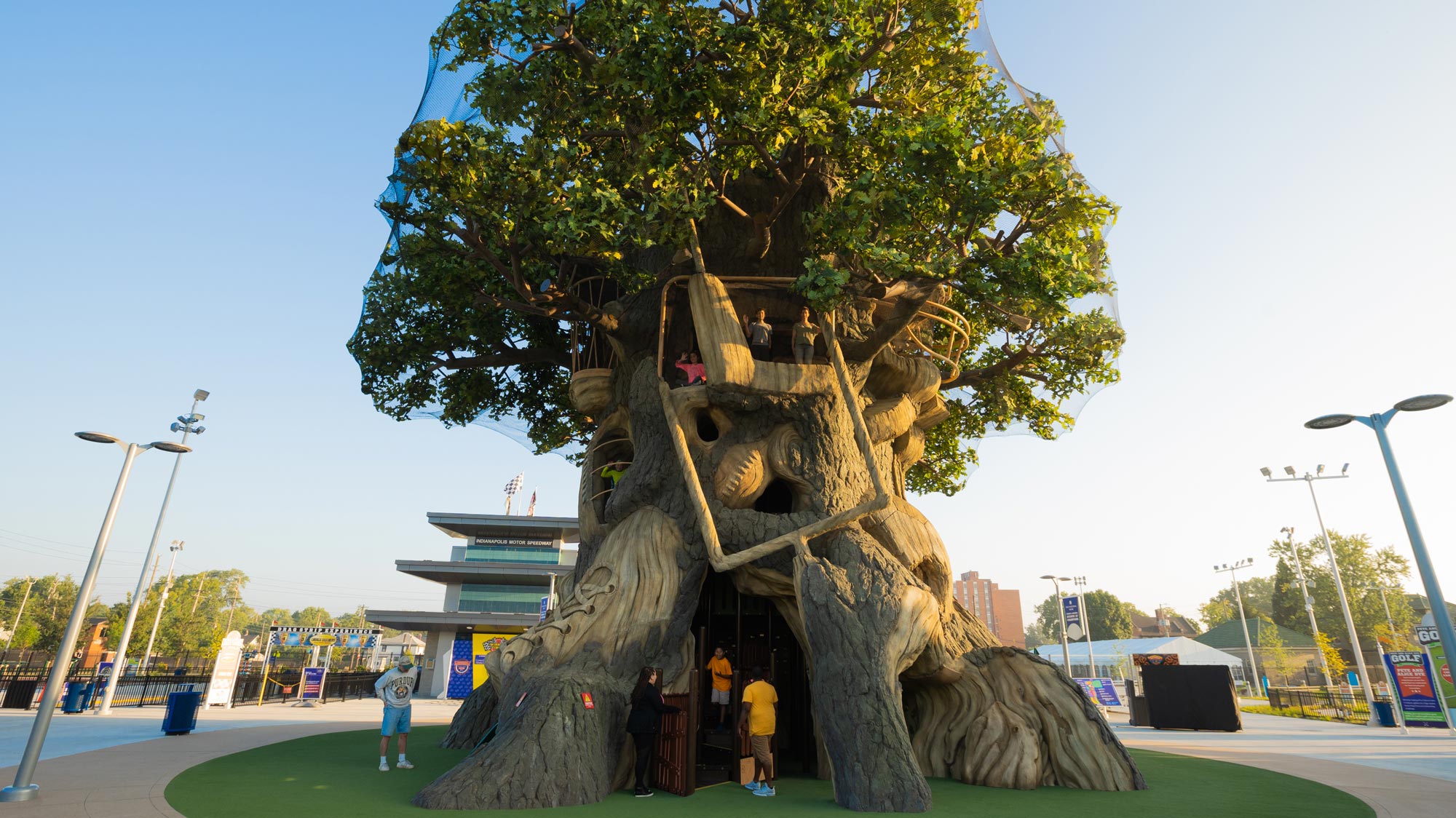
Climb in and out of your favorite sports and feel like you’re on top of the world! This impressive tree reaches 25 feet high inside, and its leaves reach even higher!
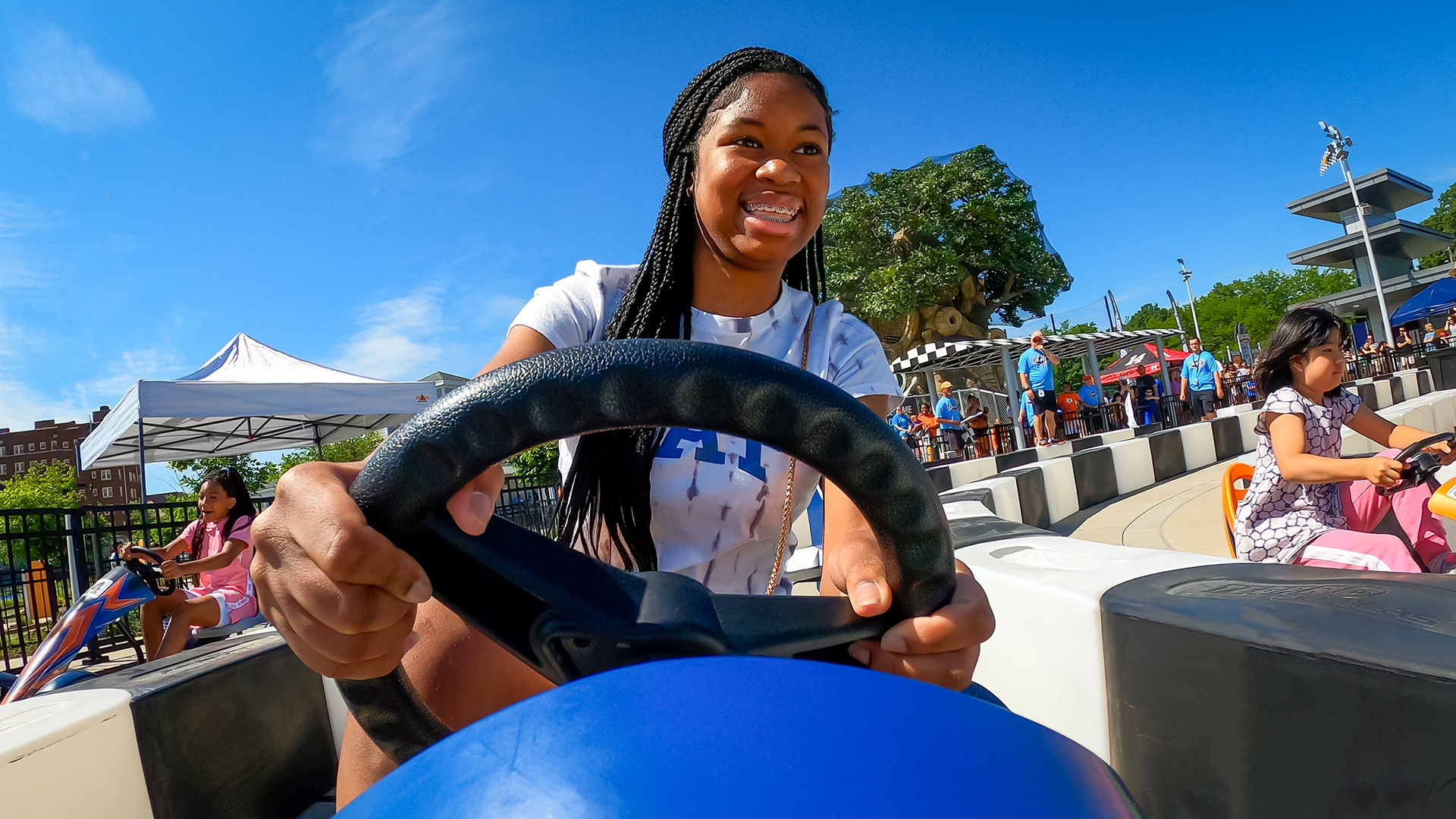
Heed speed in your pedal car! Channel your inner A.J. Foyt and race with the family on the Oval Track.
Hand cycle wheelchair attachments and "my sized" pedal car are available.
Note: Racing closes at 4:45 p.m. Closed-toe shoes are required!
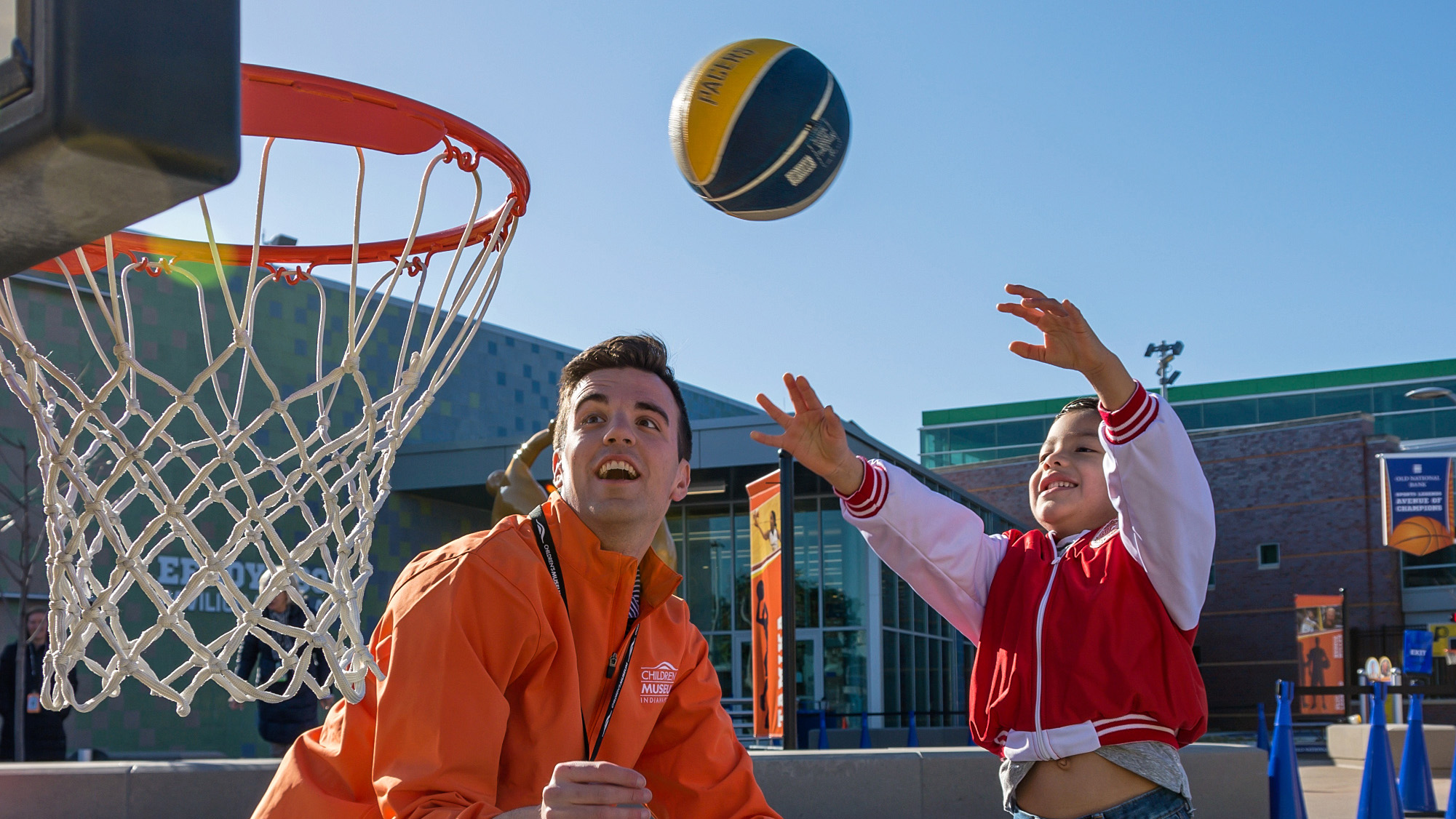
Whether cheering for the pros downtown or shooting hoops on the driveway with family, Hoosier enthusiasm for basketball has endured for decades. Get off the bench, grab a ball, and work on your moves like Tamika Catchings and Reggie Miller:
Basketball with bells, beeper attachment for rims, basketballs with hand-placement visual.

Imagine yourself in the rink with the Indy Fuel team or celebrating a big win with Wayne Gretzky! Learn about the team and try out some things they have to work on every day:
Everyday “my-size” equipment includes light plastic sticks and larger “puck” balls.

Modeled after USTA’s “10 and Under Tennis” program, our tennis courts are the perfect stop to ace your serve or practice your return.
Tennis balls with bells and streamers, hand racket.
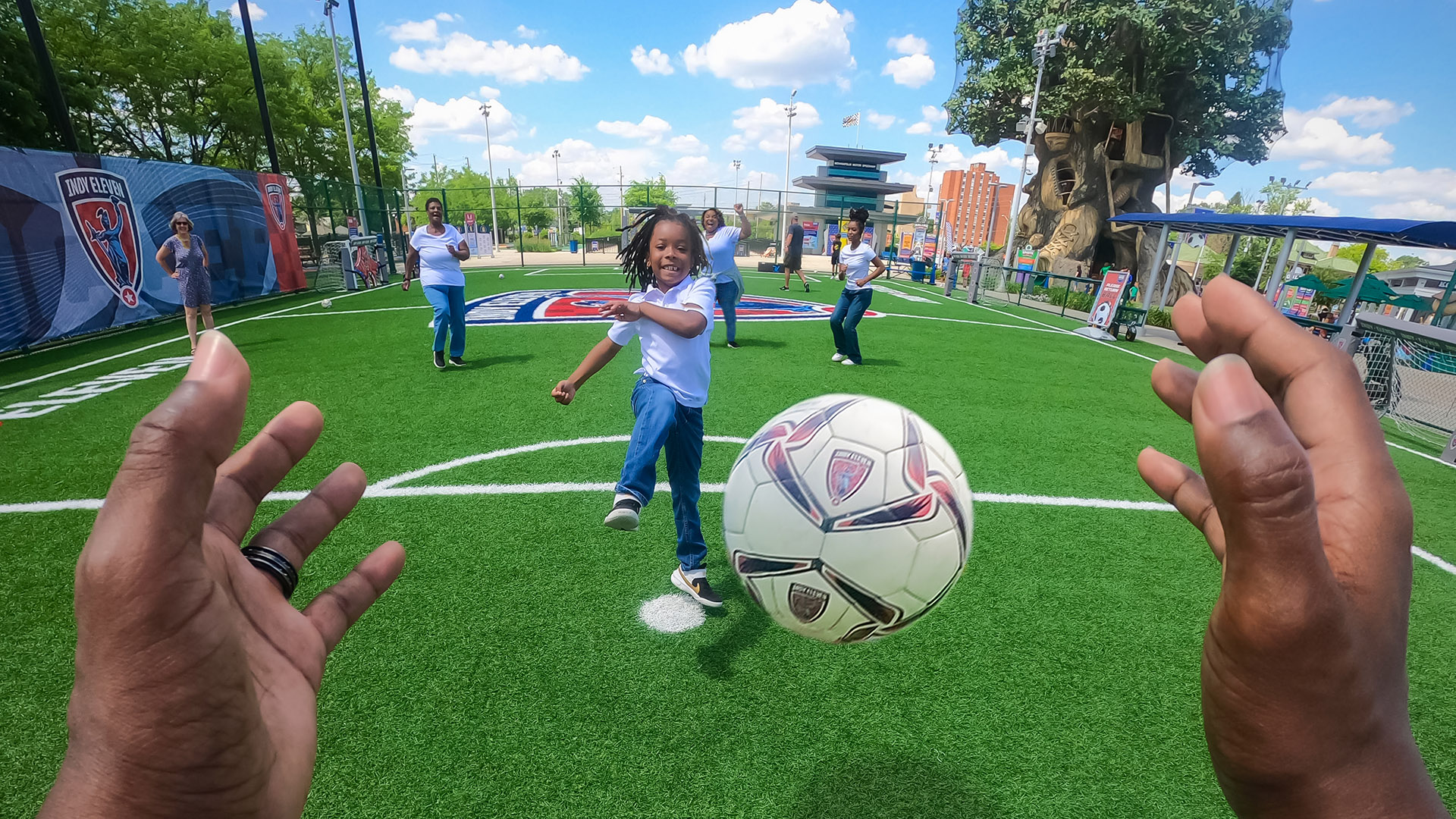
Be the forward or the goalie! Learn some soccer fundamentals and imagine yourself as Indy’s next soccer star:
Lightweight foam soccer balls, assisted kicker, soccer balls with bells.

Everyday “my-size” plastic bats; softer, baseball- and softball-sized balls; adjustable tee; “quick catch” Velcro gloves for playing catch.

Take a swing at four 9-hole courses, with challenges for beginners to mini-golf pros. Become a putting pro while learning a bit about the extraordinary design history of Indiana natives Pete and Alice Dye.
Longer putters with a larger head, lighter plastic clubs.
Note: Golf closes at 4:30 p.m.
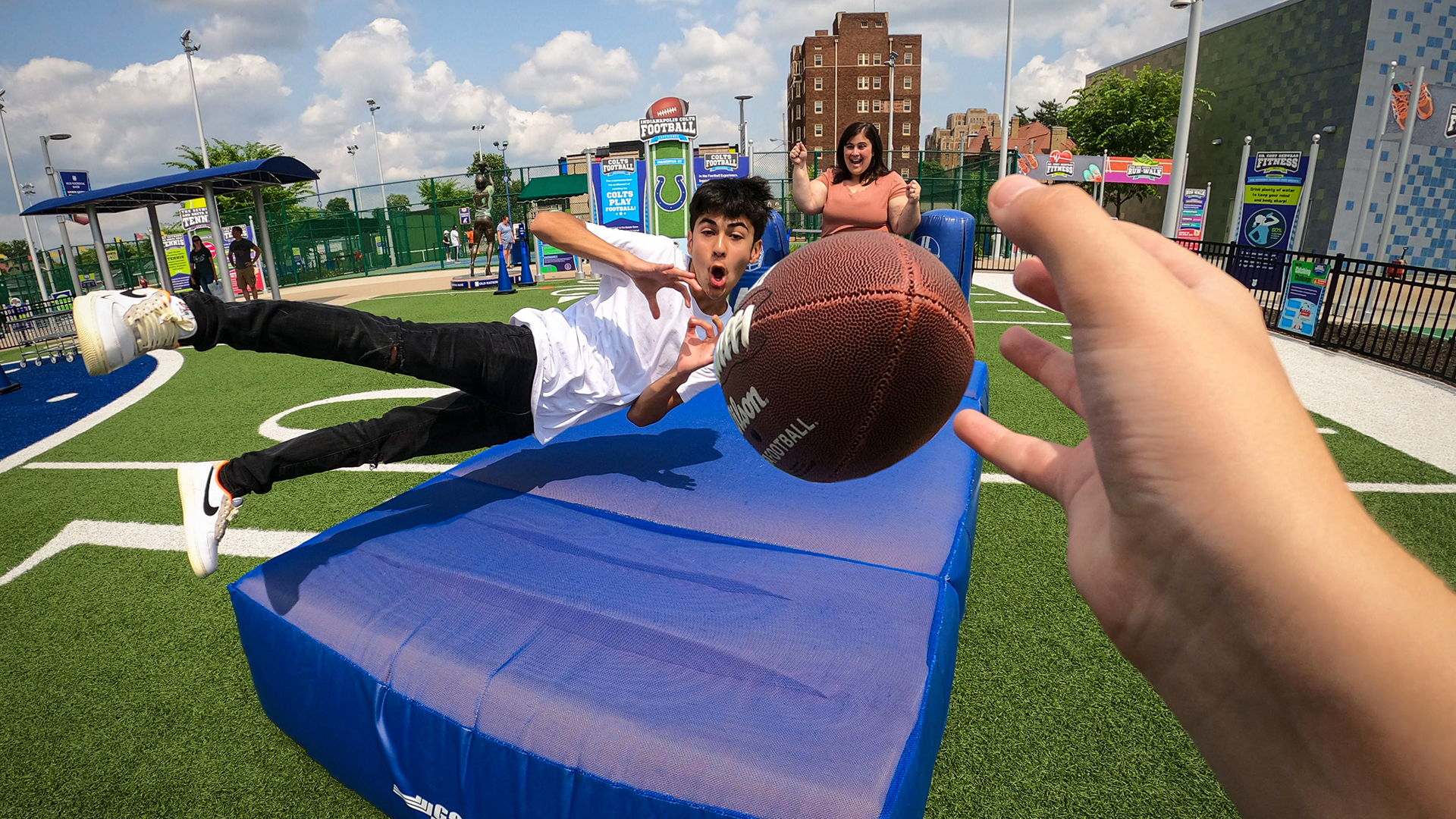
Get on the gridiron with inspiration from your favorite Indianapolis football team—the Colts! This experience prepares players of all sizes ready for an epic touchdown celebration with some basic fundamentals:
Soft footballs with holes for easier grip; cannon blasters to assist in field goals; colorful “fish” footballs, softer than regular footballs.

Fitness stations are wheelchair accessible, and the track lanes are wide and smooth enough for wheelchairs. Foam batons and breakaway hurdles are available for different track activities.
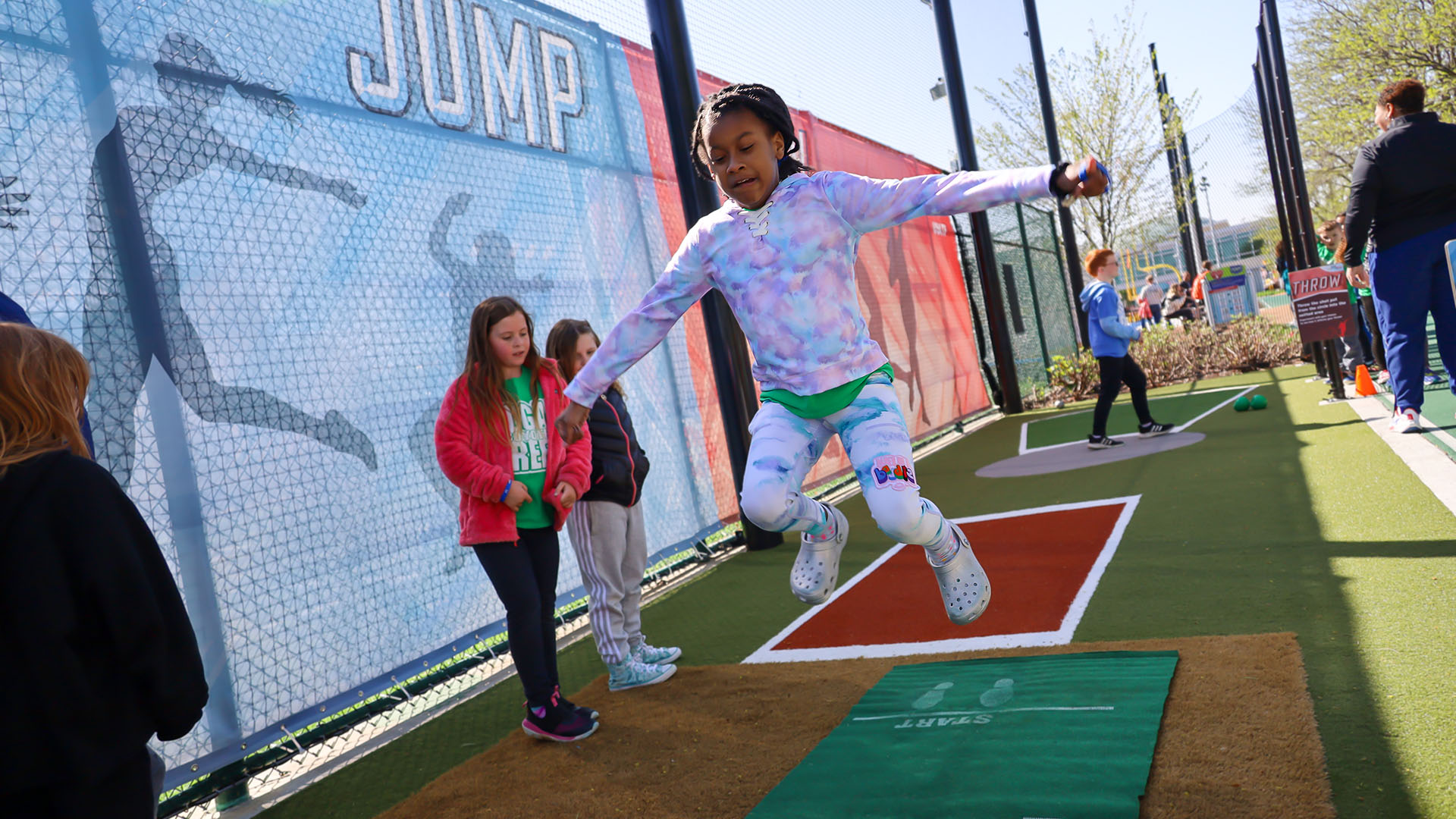
Track lanes are wide and smooth enough for wheelchairs.

Representing sports legends across the nation with ties to Indiana, the Old National Bank Sports Legends Avenue of Champions features statues of individuals who have left a significant impression on sports history, who have defied odds, who have given back, and more.
3000 North Meridian Street
Indianapolis, IN, USA 46208-4716
317-334-4000
The Children's Museum of Indianapolis is a nonprofit organization with a mission to ignite joy, wonder, and curiosity by creating powerful learning experiences for children and adults.
donate today




Hours, parking, amenities, and more to help you plan your day
Current Exhibits, Daily Activities, and Special Events
Daily admission includes the museum and sports experience
Accessibility resources to help you prepare for your visit
Get a year of unlimited visits with an annual membership.
Partner with the world's biggest children's museum.
Support the museum's mission and make powerful learning experiences possible.
Explore volunteer opportunities that spark curiosity.
Making a positive impact at the local, national, and global level.
Ensuring access and inclusivity for all through community and neighborhood programs and partnerships.
Our mission, vision, values, and initiatives guide the museum every day.
Indianapolis cultural institutions join forces to make family learning more accessible.